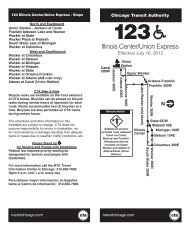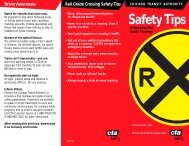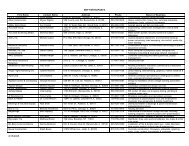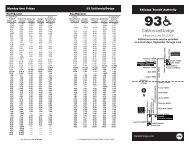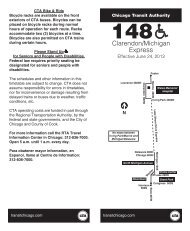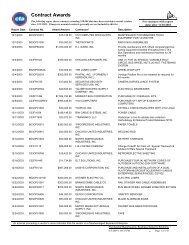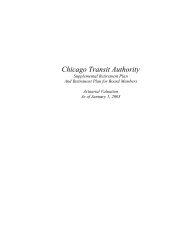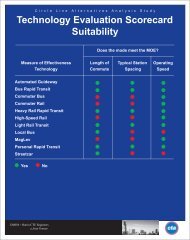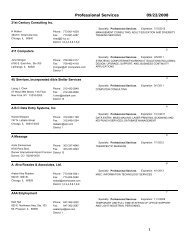Table Of Contents - Chicago Transit Authority
Table Of Contents - Chicago Transit Authority
Table Of Contents - Chicago Transit Authority
You also want an ePaper? Increase the reach of your titles
YUMPU automatically turns print PDFs into web optimized ePapers that Google loves.
CTA Express Airport Train Service Business Plan<br />
The overlap among the two major dimensions provides a further segmentation of the potential market for<br />
premium airport services. 57% of non-business travelers are visitors, with 43% being residents. A more<br />
substantial majority (71%) of business travelers are visitors, leaving 29% identified as residents.<br />
80%<br />
70%<br />
60%<br />
50%<br />
40%<br />
30%<br />
20%<br />
10%<br />
0%<br />
Figure 3: Daily Originating and Ending Passengers - 2003<br />
non-business<br />
traveler<br />
breakdown<br />
Visitors<br />
Residents<br />
57% 43%<br />
Source: Wilbur Smith Associates, 2004.<br />
Market Segments and Mode Choice:<br />
Daily Originating/Ending Passengers<br />
at O'Hare and Midway, 2003<br />
Non-Business<br />
Travelers<br />
percent (100% = 37,458 passengers)<br />
43%<br />
57%<br />
Business<br />
Travelers<br />
80%<br />
70%<br />
60%<br />
50%<br />
40%<br />
30%<br />
20%<br />
10%<br />
0%<br />
business<br />
traveler<br />
breakdown<br />
Visitors<br />
Residents<br />
71% 29%<br />
Analysis of data from the Wilbur Smith study revealed mode choice tendencies across the market<br />
segments discussed above. For all segments except residents, taxi is the most used option. Visitors and<br />
business travelers display very similar choices, suggesting that when residents travel on business they<br />
tend to behave more like visitors. CTA service is the third most used option for each of the four<br />
segments, recording 20% usage among residents; 16% among non-business; and 11% each for visitors<br />
and business travelers.<br />
• Residents - Residents as a group are more knowledgeable of local airport access options, prices,<br />
and trade-offs. In the long term, their choices reflect more complete information into their decisionmaking.<br />
They will be able to make access choices that incorporate time of day, seasonality, local<br />
construction, and pricing changes. This group may also hold strong perceptions for or against a<br />
certain mode. Additionally, those who have cars will have the option to drive and park at the airport.<br />
According to the Wilbur Smith study, 27% of residents drove and parked at the airport; 22% took a<br />
taxi; 20% used CTA service; and 16% were dropped off. Other means of private and public<br />
transportation accounted for the remaining 15%, with no residents using rental cars. These statistics<br />
are represented in Figure 4 below.<br />
• Visitors - Non-residents are less familiar with local options and are often less able to make a fully<br />
informed decision. They are inclined to make choices for which they have a reference point. For<br />
example, a visitor who is from a city that does not have a rail system is less likely to consider a rail<br />
option when in a new city.<br />
Figure 4 shows that 42% of visitors used taxis for airport access. Twenty-four percent used some<br />
form of private transportation. Another 30% split their options roughly even between renting, being<br />
37





